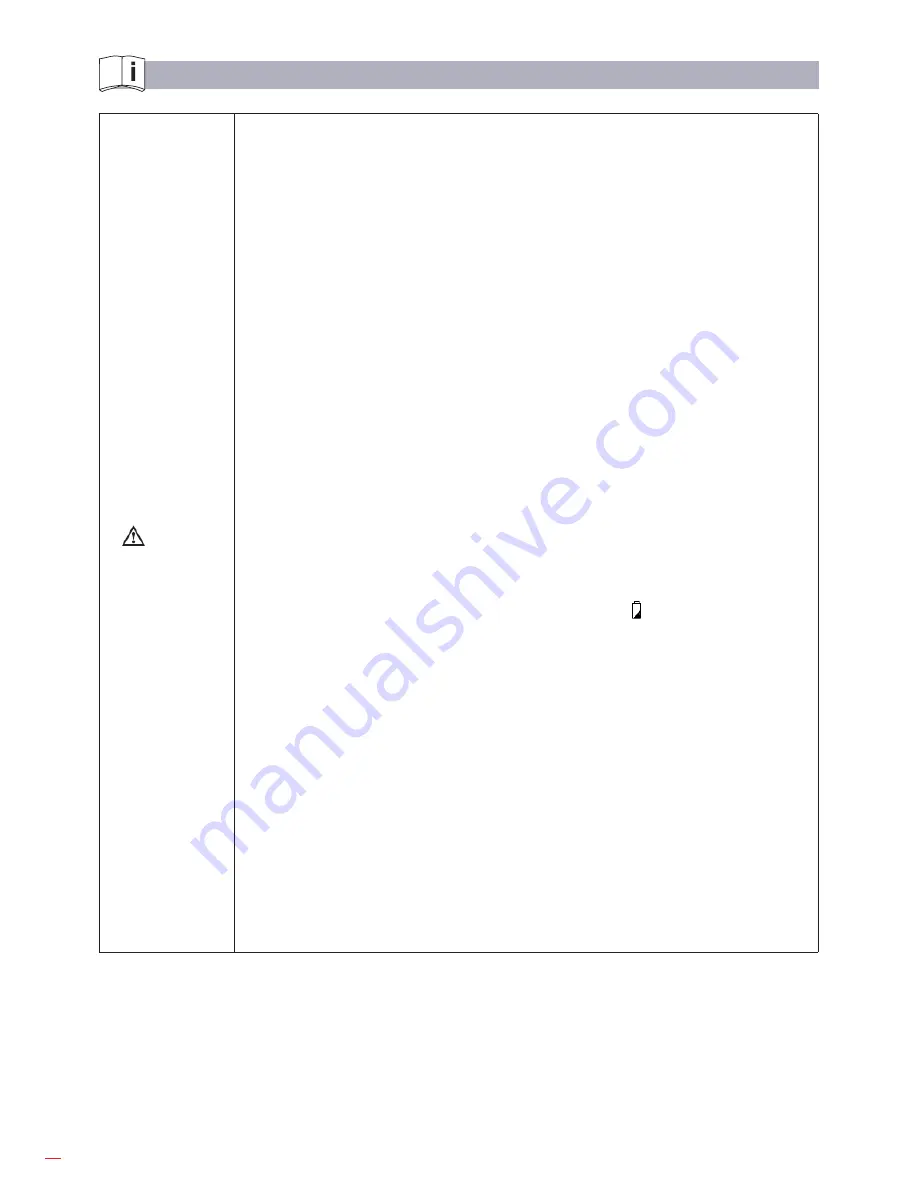
18
RULES FOR SAFE OPERATION
Warning!
To avoid possible electric shock or personal injury, and to avoid possible
damage to the Meter or to the equipment under test, adhere to the following
rules:
- Before using the Meter inspect the case. Do not use the Meter if it is damaged
or the case (or part of the case) is removed. Look for cracks or missing plastic.
Pay attention to the insulation around the connectors.
- Inspect the test leads for damaged insulation or exposed metal. Check the
test leads for continuity. Replace damaged test leads with identical model
number or electrical specifications before using the Meter.
- Do not apply more than the rated voltage, as marked on the Meter, between
the terminals or between any terminal and grounding.
- The rotary switch should be placed in the right position and no any
changeover of range shall be made during measurement is conducted to
prevent damage of the Meter.
- When the Meter is working at an effective voltage over 60V in DC or 42V
rms in AC, special care should be taken for there is danger of electric shock.
- Use the proper terminals, function, and range for your measurements.
- Do not use or store the Meter in an environment of high temperature,
humidity, explosive, inflammable and strong magnetic field. The performance
of the Meter may deteriorate after dampened.
- When using the test leads, keep your fingers behind the finger guards.
- Disconnect circuit power and discharge all high-voltage capacitors before
testing resistance, continuity, diodes and current.
- Before measuring current, check the Meter’s fuses and turn off power to
the circuit before connecting the Meter to the circuit.
- Replace the battery as soon as the battery indicator “ ” appears. With a low
battery, the Meter might produce false readings that can lead to electric
shock and personal injury.
- Remove test leads from the Meter and turn the Meter power off before
opening the Meter case.
- When servicing the Meter, use only the same model number or identical
electrical specifications replacement parts.
- The internal circuit of the Meter shall not be altered at will to avoid damage
of the Meter and any accident.
- Soft cloth and mild detergent should be used to clean the surface of the
Meter when servicing. No abrasive and solvent should be used to prevent
the surface of the Meter from corrosion, damage and accident.
- The Meter is suitable for indoor use.
- Turn the Meter off when it is not in use and take out the battery when not
using for a long time.
- Constantly check the battery as it may leak when it has been using for
some time, replace the battery as soon as leaking appears. A leaking battery
will damage the Meter.
















































